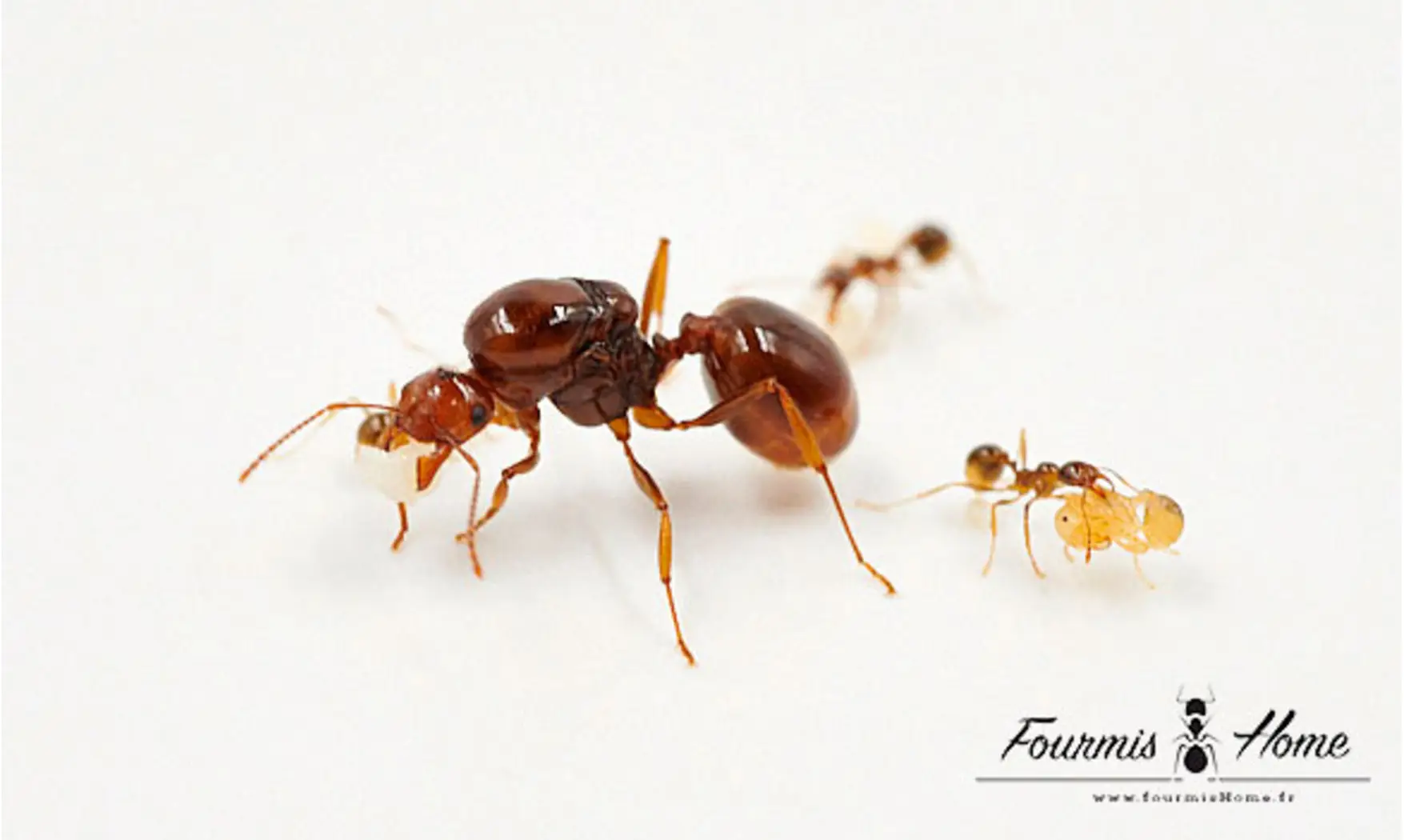

Aphaenogaster longiceps
Reference : AFOUR-003
99.90€
Disponible
0 in stock
Latin name: Aphaenogaster subterranea
Taxonomy: Subfamily: Myrmicinae Tribes: Pheidolini
Breeding level: Intermediate
Geographic distribution: Coastal areas from eastern Queensland to Victoria, also present in central Australia
Habitat: Open forest, dry forest,
Colony form: Monogyne
Queen: Size: 11 - 13mm Color: Shiny amber body, big thorax
Workers: Size: 5 - 8mm Color: Shiny amber to red brown body
Major: No
Male: Size: 4mm Color: Bright yellow brown
Food: Mainly insectivorous such as mealworms, flies, mosquitoes, crickets etc ... Also honeydew to provide them with rapid energy.
Humidity: Hunting area: 30 - 50% Nest: 40 - 60%
Temperature: Hunting area: 21 - 30 ° C Nest: 24 - 28 ° C
Hibernation: Yes, from mid-November to early March between 12 and 15 ° C
Type of nest: Nest with tubes, reconstituted stone nest.
Description: Aphaenogaster longiceps is one of the largest in the world, its development is rapid forming large aggressive colonies.
Development: Swarming September and November.
Foundation: takes place in a cloistered manner (without food) Development: 45 days from egg to worker (depending on temperature)
Colony size: Up to 10,000 individuals, the queen can reach the age of 12 years.
Taxonomy: Subfamily: Myrmicinae Tribes: Pheidolini
Breeding level: Intermediate
Geographic distribution: Coastal areas from eastern Queensland to Victoria, also present in central Australia
Habitat: Open forest, dry forest,
Colony form: Monogyne
Queen: Size: 11 - 13mm Color: Shiny amber body, big thorax
Workers: Size: 5 - 8mm Color: Shiny amber to red brown body
Major: No
Male: Size: 4mm Color: Bright yellow brown
Food: Mainly insectivorous such as mealworms, flies, mosquitoes, crickets etc ... Also honeydew to provide them with rapid energy.
Humidity: Hunting area: 30 - 50% Nest: 40 - 60%
Temperature: Hunting area: 21 - 30 ° C Nest: 24 - 28 ° C
Hibernation: Yes, from mid-November to early March between 12 and 15 ° C
Type of nest: Nest with tubes, reconstituted stone nest.
Description: Aphaenogaster longiceps is one of the largest in the world, its development is rapid forming large aggressive colonies.
Development: Swarming September and November.
Foundation: takes place in a cloistered manner (without food) Development: 45 days from egg to worker (depending on temperature)
Colony size: Up to 10,000 individuals, the queen can reach the age of 12 years.

